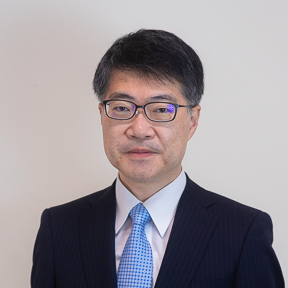
SOMEYA Takao Professor
Hongo Campus
Graduate SchoolGraduate School of Engineering - Electrical Engineering and Information Systems
DepartmentDepartment of Electrical and Electronic Engineering
Nano Physics & Device Technology Field
Biomedical engineering/Biomaterial science and engineering
Electronic materials/Electric materials
Electron device/Electronic equipment
Semiconductor
Semiconductor Process Technology
Control and Robotics
Wearable Devices
Healthcare Technology
Biosensing/imaging
Research on skin electronics utilizing organic materials
We conduct research on the application of organic electronics to biological and medical devices. We actively collaborate with many domestic and international research groups (scientists, physicists, medical doctors, and companies).
Research field 1
Device physics of organic electronics

Focusing on the properties of organic materials, our laboratory conducts research ranging from device physics with organic materials to the development of applications utilizing their advantages such as their flexibility, lightweight, etc. Recently, we have elucidated the mechanisms involved in the volume capacitance of semiconductor layers made of conductive polymers and ionic conduction in electrochemical transistors. For the practical application of organic devices, we have succeeded in extending the lifetime of organic devices by using originally developed high-performance encapsulation layers and elucidating the degradation mechanisms. Furthermore, to improve the performance and function of various physical, electrical, and chemical sensors, we are also working on the utilization of organic devices as skin-attachable sensors.
Research field 2
Medical applicaition utilizing nanomesh sensors

As the next-generation wearable electronics, development of electronic devices that can adhere to the skin and measure biological signals with higher precision is actively pursued. Our laboratory has proposed nano-sized mesh electrodes composed of gold and polymer (polyvinyl alcohol), utilizing the excellent biocompatibility of organic materials. The electrodes have both gas-permeability and stretchability; a patch test (rash and skin allergy test) on 20 subjects confirmed that no inflammatory reaction occurred even after wearing the electrodes continuously for one week. Using this skin-applied sensor, we have successfully measured resistance changes, pressure, strain, electrocardiogram, and electromyography, and are currently conducting research to further enhance their functions.
We are also working on the in-vitro application of the nanomesh sensors. In recent years, there has been extensive research to investigate the side effects of new drugs on culture dishes using a heart model with cardiomyocytes produced from human ES/iPS cells. Our laboratory has succeeded in developing sensors that are soft as cells by using a nanomesh structure consisting of multiple layers of nanofibers. We have confirmed that these sensors can stably measure field potentials for a long period of time without interfering with dynamically beating a human iPS cell-derived cardiomyocytes sheet, even when it is in direct contact with the sheet. In the future, these sensor are expected to be applied to drug discovery as a method for evaluating drug response in a simulated environment similar to the real environment and for quantitatively evaluating the maturity of cardiomyocytes and tissues.
Research field 3
Sports measurement by smartwear

Stretchable wiring and sensors have attracted much attention with the recent commercialization and steady spread of various wearable devices. Textile-type wearable electronics enable real-time monitoring of various biological information such as heart rate, electrocardiogram/electromyogram, and motion during exercise simply by wearing them. Our laboratory has succeeded in developing stretchable wiring that maintains electrical performance without breaking even when greatly stretched like a joint, achieving the world's highest electrical conductivity (935 S/cm) even when stretched to five times its original length. The new material was realized by discovering a phenomenon in which silver particles of nanometer dimensions are formed uniformly and naturally in rubber simply by mixing silver flakes of micrometer dimensions in rubber. Furthermore, we are working on research into sports application to quantitatively monitor various exercise conditions using the developed elastic wiring and smart textile.